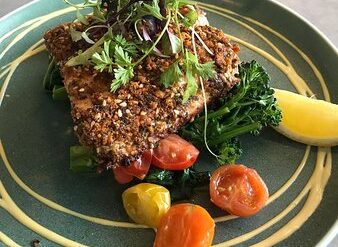Embrace the Beauty of Te Reo: An Introductory Guide to MÄori Phrases for Parents
Hello, whÄnau! Are you interested in infusing your daily conversations with the rich tapestry of Aotearoa’s indigenous culture? Learning MÄori phrases with your kids is not just educational, it’s a beautiful way to pay homage to the cultural heritage of New Zealand. And don’t worry, whether you’re a complete beginner or looking to brush up on your te reo (the MÄori language), we’ve got you sorted!
In this handy guide, we’ll walk through some basic yet pivotal MÄori phrases that you and your tamariki (children) can start using today. Not only will this expand your family’s vocabulary, but you’ll also foster a deeper connection with the MÄori culture and instill a sense of respect and appreciation for its significance in modern Kiwi life.
Why Learning MÄori Phrases is Beneficial for Your Family
Before we dive into the waiata (songs) of te reo, let’s unpack why learning these phrases is so valuable. Firstly, te reo MÄori is one of the official languages of New Zealand, and it’s experiencing a wonderful resurgence. By introducing your children to these phrases, you’re giving them the gift of language diversity and inclusivity.
Moreover, as a parent, nurturing bilingualism can enhance cognitive abilities in your children, paving the way for better problem-solving skills and creative thinking. Plus, what’s cooler than being able to kÅrero (talk) in another language?
Getting Started with MÄori Greetings
One of the best places to start is with the basics of daily greetings. These are phrases you can incorporate with ease from the moment you step out the door to the time you tuck your little ones into bed. Let’s get started!
- Kia ora – Hello! This is the Swiss Army knife of MÄori greetings, suitable for all occasions, and probably the most well-known MÄori phrase.
- TÄ?nÄ koe (to one person) / TÄ?nÄ kÅrua (to two people) / TÄ?nÄ koutou (to three or more people) – Formal greetings thatare more personalized than kia ora, recognizing the presence of the person or people you’re greeting.
Practice these greetings with your kids when you say hello to neighbours, friends, and even cuddly pets! It’s a fun and easy way to normalize the use of MÄori phrases in everyday life.
Farewell Phrases to Enrich Partings
Just as important as hellos are the goodbyes. Here are a couple of MÄori phrases that encapsulate that heartwarming sentiment of farewell:
- Haere rÄ – Farewell to someone leaving. Wave off your kids to school with a cheerful “Haere rÄ!” and watch them embark on their daily adventure with a smile.
- E noho rÄ – Farewell to someone staying. When you’re the one leaving the house, or if your children are off to bed, this is the phrase to bestow upon them.
Integrating these sign-offs into your departure routines can add a sprinkle of te reo to even the most bittersweet farewells.
Basic Courtesies in Te Reo
Nobody is too young or too old to be polite! Manners are essential, and what better way to express gratitude and courtesy than with these mÄori phrases?
- TÄ?karo mai! – Come and play! Perfect when your kids are making new friends at the playground.
- Ka kite anÅ – See you later! A friendly send-off that promises another meeting.
Remember, repetition is key to learning a new language. Encourage your little ones to use these expressions regularly, and before you know it, they’ll have a kete (basket) full of MÄori phrases ready for use!
Conclusion
By introducing these simple yet essential MÄori phrases into your family’s everyday life, you’ll pave the way for a more inclusive, bilingual home environment. Embracing te reo MÄori is more than just learning a language; it’s about acknowledging and celebrating an integral part of New Zealand’s identity and heritage.
Follow us as we continue to explore more phrases, cultural tidbits, and fun ways to keep te reo alive in your household in subsequent sections of this guide—because every new word is a new opportunity to connect and grow together.
Stay tuned and embrace the vibrant culture of Aotearoa by all means—kia kaha (be strong) in your journey of language discovery with your tamariki. And remember, every phrase you learn is a step towards keeping this beautiful language thriving for generations to come!

Five Things Parents Should Know When Preparing to Teach M?ori Phrases
As you embark on this cultural journey with your family, there are a few important things to keep in mind:
1. Pronunciation is Key
Te reo M?ori has a unique set of sounds that can be quite different from English. Paying close attention to pronunciation will ensure that you and your children can speak the language correctly and respectfully. For instance, the ‘wh’ sound is similar to an English ‘f’, and vowels are pronounced more like Spanish or Italian – ‘a’ as in ‘car’, ‘e’ as in ‘egg’, ‘i’ as ‘ee’ in ‘see’, ‘o’ as in ‘or’, and ‘u’ as ‘oo’ in ‘soon’. There are great online resources and apps that can help with pronunciation.
2. Start with What Interests Your Child
Introduce phrases and words through subjects and activities that already catch your child’s interest. If they love animals, learn animal names in te reo together. If it’s storytime, find books that incorporate both English and te reo M?ori. This will make the learning process more enjoyable and meaningful.
3. The Importance of Repetition
Like with any language, repetition is the key to learning. Consistently use the phrases you’ve learned in daily life. Encourage your children by repeating words and phrases and using them in context. For example, always say “Kia ora” when greeting each other to reinforce this habit.
4. Cultural Context Matters
Understanding the cultural significance behind the words enhances the learning experience. In M?ori culture, language is deeply connected to the land and the people’s history. Sharing the stories and origins of certain words or phrases can spark interest and respect for the language.
5. Be Patient and Keep It Fun
Understanding that mastery takes time is important for both you and your children. Celebrate the small wins and don’t be afraid to make mistakes; it’s all part of the learning process. Include games, songs, and interactive activities to keep te reo M?ori engaging and captivating for your tamariki.
As you incorporate these tips into your family’s te reo M?ori journey, remember that learning a new language is not just about speaking it, but also about connecting with its roots and embracing a broader worldview. Your efforts will not only benefit your immediate family but will also contribute to preserving the M?ori language for future generations.
Keep exploring and sharing te reo M?ori with joy and enthusiasm. Ahakoa he iti, he pounamu. Although it is small, it is precious!
See more great Things to Do with Kids in New Zealand here. For more information see here
Disclaimer
The articles available via our website provide general information only and we strongly urge readers to exercise caution and conduct their own thorough research and fact-checking. The information presented should not be taken as absolute truth, and, to the maximum extent permitted by law, we will not be held liable for any inaccuracies or errors in the content. It is essential for individuals to independently verify and validate the information before making any decisions or taking any actions based on the articles.




